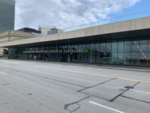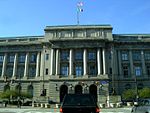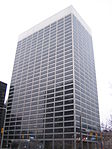Public Auditorium

Public Auditorium (also known as Public Hall) is a multi-purpose performing arts, entertainment, sports, and exposition facility located in the civic center district of downtown Cleveland, Ohio. The 10,000-capacity main auditorium shares its stage with a second venue housed at the facility: the 3,000-capacity Music Hall. Although Public Auditorium was planned and funded prior to World War I, construction did not begin until 1920, and the building did not open until 1922. Designed by city architect J. Harold McDowell and Frank Walker of Walker and Weeks in a neoclassical style matching the other Group Plan buildings, it was the largest of its kind when opened, then seating 11,500.
Excerpt from the Wikipedia article Public Auditorium (License: CC BY-SA 3.0, Authors, Images).Public Auditorium
Lakeside Avenue East, Cleveland
Geographical coordinates (GPS) Address Phone number Website Nearby Places Show on map
Geographical coordinates (GPS)
| Latitude | Longitude |
|---|---|
| N 41.504061 ° | E -81.694017 ° |
Address
Huntington Convention Center of Cleveland
Lakeside Avenue East 300
44113 Cleveland
Ohio, United States
Open on Google Maps











